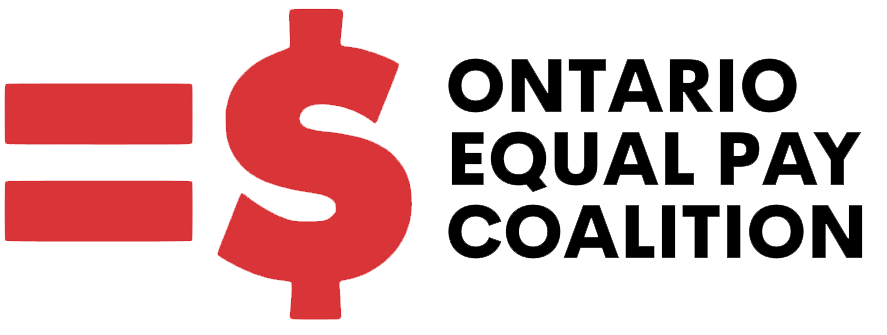Pay Equity Legislation across Canada
Six Canadian provinces–Manitoba, New Brunswick, Nova Scotia, Prince Edward Island, Ontario, and Quebec–have enacted specific pay equity legislation. Saskatchewan, Newfoundland, and British Columbia have not enacted pay equity laws but have developed policy frameworks for negotiating pay equity with some specific public sector employees. Only Alberta has neither passed pay equity legislation nor developed a pay equity negotiation framework.
All of Canada’s provinces and territories also have human rights legislation which prohibits discrimination in employment generally and which, in the absence of or in addition to pay equity legislation, can be a tool for addressing discrimination at pay.
Provincial Pay Equity Laws
Beginning in 1986, six Canadian provinces enacted specific pay equity legislation which imposes proactive obligations on employers (usually public sector employers) to take steps to identify and eliminate wage discrimination. These proactive statutes were developed in recognition of the fact that pay discrimination is systemic – it is not restricted to particular jobs in particular workplaces. The proactive obligations also responded to the difficulty experienced in enforcing Canada’s federal legislation which is complaint-based – that is, it is only enforced in response to specific complaints.
In order of chronology, the provinces that enacted pay equity legislation are as follows.
Manitoba (1986)
The first jurisdiction to pass proactive legislation was Manitoba which, in 1986, enacted the Manitoba Pay Equity Act. Under this statute, which applies only to the provincial public sector, an obligation was placed on employers to ensure that there would be no difference between the wages of male and female employees performing work “of equal or comparable value.” The process for eliminating discrimination involved negotiation with the unions representing public sector employees. The Act does not cover municipal governments or independent boards and commissions. The Act does not cover private sector employees.
Prince Edward Island (1988)
Prince Edward Island’s Pay Equity Act was passed in 1988, and provides for the establishment of a Pay Equity Bureau and the appointment of a Commissioner of Pay Equity to offer information and assistance in the achievement of pay equity by the parties named in the statute. These agencies were also originally empowered to monitor and to process complaints following the achievement of pay equity, but these powers were eliminated in 1995, apparently in order to minimize the effect of the pay equity process on ongoing collective bargaining. The Prince Edward Island statute covers Crown corporations, universities and colleges, nursing homes, and other agencies to be identified in the regulations. To date, no such regulations have been passed.
New Brunswick (1989)
New Brunswick’s Pay Equity Act was passed in 1989. New Brunswick’s legislation requires that the employer negotiate with bargaining agents representing employees in the public service with respect to a job evaluation process and the implementation of any wage adjustments. The Pay Equity Bureau represents the employer during the implementation phase, determining the process for dealing with unrepresented employees, maintaining statistical information, providing reports to the parties and so on. The New Brunswick statute applies only to the public service.
Nova Scotia (1989)
In Nova Scotia, parties to an employment relationship covered by the statute are required to bargain in good faith with respect to the achievement of pay equity. A Pay Equity Commission provides advice and assistance. The Commission may intervene to determine matters in dispute, or to direct the parties to comply with the Nova Scotia Pay Equity Act, although no sanctions are spelled out in the statute for failure to comply. The legislation contemplates a single wage adjustment, and makes no provision for maintenance, though the Commission continues to monitor the agreements which have been implemented. The Nova Scotia statute covers all public sector employers, including municipalities, health care facilities, and universities.
Quebec (1996)
Quebec’s Pay Equity Act was passed in 1996. Like the Ontario statute, the legislation imposed a positive obligation on employers in the public and private sectors. In this case, employers with fewer than 10 employees are not covered under the statute. The statute contemplates different requirements for enterprises employing more than one hundred employees, enterprises employing between 50 and 99 employees, and enterprises with between 10 and 49 employees. Enterprises with between 10 and 49 employees are not required to develop a formal pay equity plan, but these employers are required to assess their compensation system and determine whether any wage adjustments are required.
The statute provides that the employer has a responsibility to ensure that the pay equity plan is maintained as well.
The statute uses the concept of “enterprise” which is common to Quebec’s Civil Code and Labour Code, where “enterprise” is defined as a configuration of activities which can be described as self-contained and functional. The statute contemplates that, with some situational exceptions, there will be a single pay equity plan covering all employees of an enterprise.
Provincial Policy Frameworks for Pay Equity
Saskatchewan
Saskatchewan does not have pay equity legislation, though the Saskatchewan Pay Equity Coalition has been lobbying for legislation for years. The Saskatchewan Human Rights Commission has recommended that proactive and comprehensive pay equity legislation be enacted. This recommendation has not been pursued by the Government of Saskatchewan. In 1999, however, the government undertook the development of an Equal Pay for Work of Equal Value and Pay Equity Policy Framework. This project applies to the public sector, and includes Crown corporations, Treasury Board agencies, boards and commissions, the Saskatchewan Institute of Applied Science and Technology, regional colleges and the health care sector.
Newfoundland
Newfoundland does not have specific pay equity legislation. In Newfoundland, beginning in 1988 after years of lobbying from public sector unions, the government conducted pay equity negotiations with public-sector unions as part of the collective bargaining process. Agreements were reached with unions representing some groups of health care workers, employees of Newfoundland Hydro, the Public Service and library workers. Legislation in the early 1990s rendered void any retroactive wage adjustments which were included in these agreements, and this legislation survived a constitutional challenge.
British Columbia
British Columbia does not have specific pay equity legislation. In British Columbia, an approach similar to the one used in Saskatchewan was adopted in 1995 under the Public Sector Employers’ Council Pay Equity Policy Framework, which contemplated the conclusion of pay equity agreements in a range of public-sector employment relationships.
Under the Human Rights Code Amendment Act, the Government of British Columbia proposed to extend a pay equity obligation to the private sector. This legislation, which bore some resemblance to section 11 of the Canadian Human Rights Act, was to be administered by the British Columbia Human Rights Commission through a complaint-based process. The current government repealed this legislation, and appointed a Task Force in 2001 to review the pay equity issue, and to make recommendations for possible legislative change.
The conclusions in the 2002 British Columbia Task Force report occasioned considerable controversy and public debate. The report’s recommendations did not suggest that the government should be taking legislative action. However, they did propose that sectoral studies should be carried out to support a voluntary pay equity process. The Government of British Columbia has indicated that it is currently formulating a response to the report.
No Pay Equity Legislation or Policy Framework
Alberta
Alberta has not enacted any pay equity legislation or developed a framework approach to achieving pay equity for the public sector. The Human Rights, Citizenship and Multiculturalism Act contains a provision requiring that the “same rate of pay” be paid for “the same or substantially similar work,” a provision of the kind which is included in labour standards statutes in many provinces. This provision offers workers two avenues of recourse: lodging a complaint with the Human Rights Commission, or bringing an action for the recovery of wages in the courts.
Federal Pay Equity Legislation
Canada’s first pay equity legislation was enacted in the federal jurisdiction in 1977 after Canada ratified the ILO Convention No. 100.
The federal pay equity provision is found in s. 11 of the Canadian Human Rights Act (CHRA). The CHRA sets out a complaint-based model of pay equity that applied to both the public and private sector in federal jurisdiction.
Section 11 sets out freedom from discrimination for male and female employees employ employed in the same establishment who are performing work of equal value to. The Canadian Human Rights Commission has also prepared brief Equal Wage Guidelines which help explain how the right in s.11 should be implemented. The enforcement of the federal law, though, has had a troubled history, plagued by protracted and costly litigation.
In 2000, the federal government established an expert Pay Equity Task Force to make recommendations for a workable, effective, pay equity law. Following years of consultation under all key stakeholders – including employers, unions, and women’s advocates – commissioned and expert research, the Task Force’s Report was released over three years ago, in May 2004. It recommended new, stand-alone pay equity legislation that is more in line with the pro-active laws that exist in some provinces. Proactive pay equity legislation puts the onus on an employer to introduce a pay equity program, rather than relying on an individual or union to put the resources into pursuing a lengthy case. Proactive pay equity legislation requires an employer to work with the union, or with employees if no union exists, to introduce a program that raises women’s wages by comparing and re-evaluating predominantly male and female jobs and adjusting differences in pay between those considered of the same value. Pay equity programs and adjustments need to be made within a specified time period, which avoids the lengthy delays now experienced under the federal complaint-based approach. This type of legislation exists now in Manitoba, Ontario, Quebec, New Brunswick, Nova Scotia and Prince Edward Island. (The provincial legislation applies to the public sector only, except in Ontario and Quebec, where all except the smallest private-sector workplaces are covered). The Task Force Report, entitled Pay Equity: A New Approach to a Fundamental Right, identified a number of steps which need to be taken to address the situation. The Task Force called on the federal government to:
- Recognize that pay equity is a fundamental human right.
- Adopt a new proactive pay equity law that will cover women as well as racially visible workers, Aboriginal workers and workers with disabilities.
- Require that all federally regulated employers adopt a pay equity plan that will include all workers whether they work full or part-time, temporary or casual
- Require employers, unions and workers’ representatives to examine pay systems to make sure they are based on the principle of equal pay for work of equal value
- Establish a new Pay Equity Commission and a Pay Equity Tribunal to enforce the law.
The Report’s recommendations are key and represent an important step forward. The Report provides a comprehensive review of the wage gap in Canada and situates its analysis in a way that recognizes Canada’s obligation under international law to eradicate wage discrimination. The Task Force acknowledges that employers have the responsibility to correct discriminatory wage disparities. It assigns an important role to unions where workers are represented, and mandates the creation of pay equity committees to prepare and monitor pay equity plans in all workplaces, unionized or not. It proposes the establishment of a separate pay equity commission to assist employees, employers, and unions, to provide education on pay equity issues and to resolve any disagreements. The recommendations are thorough and well researched. The women’s movement and the labour movement welcomed the Task Force Report and have been working hard to win legislation to implement its recommendations. Employer organizations have mounted a powerful lobby to delay the introduction of this needed equality legislation.
In response, the former Liberal government stated that it accepted that pay equity is a human right, and that proactive legislation is needed. This is, of course, in line with Canadian law and international conventions Canada has signed. But, the Liberal government failed to introduce the needed legislation, and the Conservative government refused to implement the Task Force report. Also, the Public Sector Equitable Compensation Act was enacted, taking away the right of female public sector workers to file complaints under the CHRA. For far too long, women and other equality-seeking groups have been paid less than the value of their work. There is no excuse for further delay — the Task Force recommendations provide a clear direction, and there are useful models of proactive pay equity in Ontario and Quebec to build on. Under the new Liberal government, an all-party Committee has been set up to move forward with a proactive approach to pay equity.




